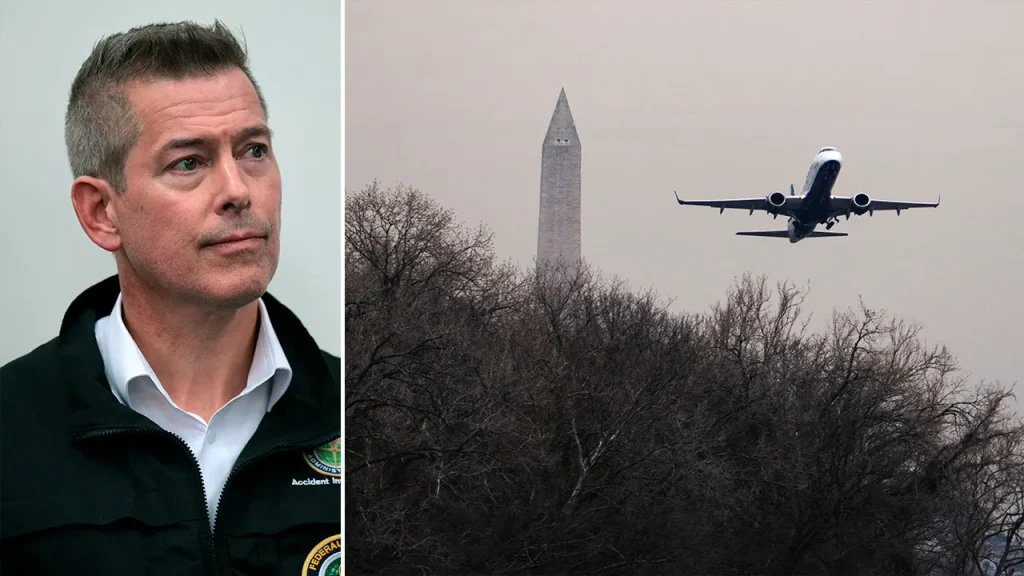Transportation Secretary Sean Duffy has announced the implementation of artificial intelligence (AI) technology aimed at identifying and mitigating air traffic risks across the country. This decision follows a series of alarming near-miss incidents and tragic plane crashes, including a devastating midair collision at Ronald Reagan Washington National Airport that resulted in 67 fatalities. As part of a broader initiative, Duffy also outlined plans for a new advanced traffic control system designed to enhance safety and efficiency in U.S. airspace.
| Article Subheadings |
|---|
| 1) Recent Aviation Incidents and Responses |
| 2) Implementation of AI in Air Traffic Control |
| 3) Identifying Air Traffic Hot Spots |
| 4) Current Challenges in Air Traffic Management |
| 5) Future of Air Traffic Control: A New Era |
Recent Aviation Incidents and Responses
In recent months, the U.S. aviation sector has faced severe scrutiny following several alarming incidents, with the most notable being the deadly midair collision at Ronald Reagan Washington National Airport (DCA) on January 29. This incident involved a commercial plane and an Army Black Hawk helicopter, resulting in a tragic loss of 67 lives. In the aftermath of the tragedy, Transportation Secretary Sean Duffy emphasized the need for comprehensive reviews of existing air traffic protocols and systems.
The National Transportation Safety Board (NTSB) has since reported a significant number of near-miss incidents, with over 15,000 alerts regarding aircraft and helicopters being issued at DCA alone from October 2021 to December 2024. These statistics underscore the urgent need to address the systemic vulnerabilities within air traffic control mechanisms across the nation.
Implementation of AI in Air Traffic Control
Following the recent tragedies, officials have turned to advanced technology to augment air safety protocols. Sean Duffy reported that the U.S. Department of Transportation is now utilizing artificial intelligence to analyze patterns and potential risks within the airspace. “This technology allows us to identify and address air traffic risks nationwide,” he stated, highlighting its potential to prevent further tragic incidents.
The AI systems are being designed to process vast amounts of data to highlight key risk areas, often referred to as “hot spots,” where collisions or dangerous close encounters could potentially occur. Currently, there is an effort to enhance real-time detection systems, thereby allowing for preemptive measures to be implemented before an incident occurs.
Identifying Air Traffic Hot Spots
The challenge remains as to how exactly these “hot spots” are identified and analyzed. While Duffy confirmed the usage of AI, the specifics of the technology used for risk assessment have yet to be revealed. “We’re looking at different geographic areas with higher levels of traffic interactions,” said Duffy, emphasizing the critical nature of systematically analyzing regions with elevated risks.
The implementation of aerial safety measures hinges on ensuring that any potential hazards are flagged well in advance. Duffy remarked that the insights generated through AI could be instrumental in averting tragedies such as that of January 29. The urgency of this task is palpable, especially in light of the recent mishaps.
Current Challenges in Air Traffic Management
Despite the advancements in AI technology, significant challenges remain in the U.S. air traffic control system. Duffy pointed out that the current infrastructure is outdated, with components that are between 25 to 40 years old. This obsolescence contributes not only to systemic inefficiencies but also to heightened risks for pilots and passengers alike.
In addition, issues such as staffing shortages and organizational transitions have come under scrutiny. Duffy indicated that many of these problems stem from a shift of airspace control under the previous administration, creating disruptions in air traffic coordination. “It’s important that we rectify these processes and ensure that our air traffic management is equipped with the latest technology,” he stressed.
Future of Air Traffic Control: A New Era
Looking ahead, the Federal Aviation Administration (FAA) has pledged to overhaul the air traffic control system into a more sophisticated, state-of-the-art framework. As Duffy mentioned during a news conference, the commitment to this new build aims to revitalize air traffic management across the United States.
The prospective changes are expected to include updated technology to enhance communications and tracking capabilities. By investing in modern infrastructure, officials hope to increase both efficiency and safety in U.S. airspace, ultimately restoring public confidence in air travel.
| No. | Key Points |
|---|---|
| 1 | AI technology is being implemented to enhance air traffic safety following recent near-miss incidents. |
| 2 | The recent midair collision at DCA has raised urgent concerns about existing air traffic protocols. |
| 3 | Officials are working to identify air traffic “hot spots” using AI systems. |
| 4 | Current air traffic control infrastructure is critically outdated, necessitating a complete overhaul. |
| 5 | Future plans include a comprehensive upgrade to the air traffic control system to enhance safety and efficiency. |
Summary
The recent announcement by Sean Duffy regarding the integration of AI technology into air traffic control represents a pivotal moment for aviation safety in the United States. Following a series of tragic incidents, the Department of Transportation’s commitment to enhancing safety protocols and overhauling outdated systems aims to restore confidence in air travel. With plans to identify hot spots and implement a new means of traffic management, the future of U.S. aviation could see significant advancements in both safety and efficiency.
Frequently Asked Questions
Question: What prompted the use of AI in air traffic control?
The decision to utilize AI was primarily driven by recent incidents involving near-misses and fatal crashes, including a severe midair collision that resulted in 67 deaths.
Question: What are “hot spots” in aviation?
“Hot spots” refer to areas in airspace identified as having a higher risk for potential collisions or near-misses, which are now being analyzed using AI technology.
Question: How old is the current air traffic control system?
Many components of the current air traffic control system are between 25 to 40 years old, contributing to significant inefficiencies and safety concerns.
